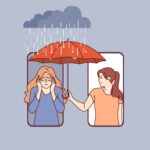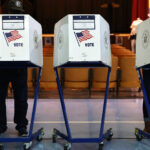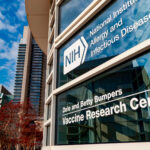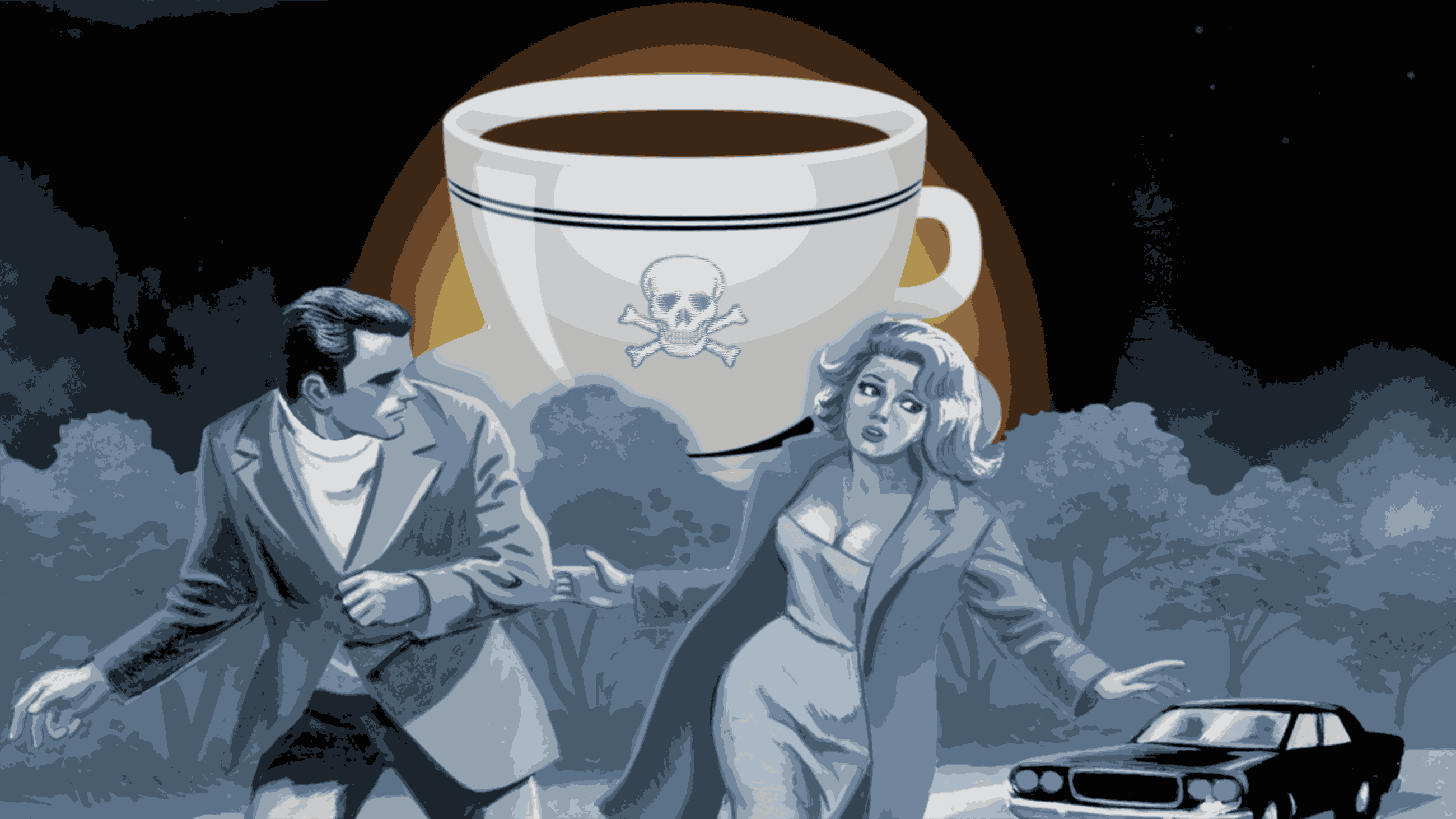In Labeling Coffee a Carcinogen, California Leaps Ahead of the Science
Maybe you were sipping your morning coffee a few weeks ago when you read that a California judge essentially ruled that coffee causes cancer. To be precise, Superior Court Judge Elihu Berle, argued that roasters and manufacturers failed to prove that that there is no substantial risk to drinking coffee, or that the benefits of drinking the beverage outweigh the risks posed by acrylamide, a substance created naturally during the brewing process. By the standards of California’s decades-old Proposition 65 law, Berle affirmed in his final ruling last week, all coffee sold in California must come with a warning label stating:

VIEWPOINTS
Partner content, op-eds, and Undark editorials.
WARNING: This product contains chemicals known to the State of California to cause cancer and birth defects or other reproductive harm.
Most news coverage responsibly noted that the evidence about acrylamide is not nearly as definitive as the judge ruled when he found that coffee warrants a label that it contains a “known” human carcinogen. That’s actually quite a leap, given the detailed scientific testimony he heard during the case. Among the topics discussed was how The International Agency for Research on Cancer, or IARC, makes its judgments about the carcinogenicity of substances.
IARC is one of the leading scientific bodies in the world, and it is also one of several expert panels on which California relies for scientific opinions in such cases. The IARC has concluded that while there is sufficient evidence to consider acrylamide carcinogenic in experimental animals, there is insufficient evidence for carcinogenicity in humans. Therefore, its overall evaluation is that “acrylamide is probably carcinogenic to humans.” (Emphasis mine.)
The IARC, it should be noted, is known to be exquisitely precautionary. Still, its analysis essentially suggests that, to the best of our knowledge, acrylamide is likely to be carcinogenic. In response, Judge Berle’s ruling means that according to California law, that it is carcinogenic. That may seem a distinction without much difference. If something might cause cancer, it’s safest to treat it like it does, right?
The problem is that to scientific risk assessors who try to determine just what threatens us, and how much, there is a universe of difference between these two characterizations. It’s a critical difference that California’s law fails to respect, and that failure creates risks of its own.
The scientific analysis of whether something poses a risk, and how much of a risk it might pose, needs to establish several things. Is the suspected agent hazardous? What harm does it cause? By what biological mechanisms? At what doses over what period of time? To which people, and at what ages? It is devilishly difficult to develop all that information, given that we can’t test these potentially hazardous substances on people.
We can test them in vitro, in individual cells in a lab, or even with tiny simulated organs in a dish — a mini liver or pancreas or kidney grown from stem cells in a device that monitors molecular changes when those simulated organs are exposed to the substance in question. Toxicology is even starting to test potential hazards in silico, using computers to compare how the one chemical under investigation compares to others that have been studied. But none of those tests can demonstrate what are called in vivo systemic effects — that is, what a substance does in the complexity of a living being.
To get at that, we use animals as proxies — though there are myriad limitations to this. The animals have to be small and easy (and inexpensive) to feed and maintain. They have to have short life spans, in order to obtain results over a reasonable timeframe, and they are typically kept in a highly controlled environment in order to isolate the impact of the substance being tested. They are also usually exposed to extremely large doses of the substance in question, to ensure that in a relatively small sample (50 mice is an average), any harmful effect will show up that might be missed with lower doses.
The problem is that those conditions aren’t even close to what happens in the real world. And mice and rats, after all, aren’t people. So while the animal tests can provide a warning — a hint of a “maybe” or even a “probably,” they are far short of a confirmation.
That’s not to say that animal tests are not precautionary or useful — they certainly are, and there are far too many substances on the market for which these sorts of tests have not yet been done. But taken alone, and without a lot more information from studies of human health, these tests can’t definitively determine what does and doesn’t cause cancer.
California’s Proposition 65 makes the logical leap anyway, and that is both unfortunate and potentially harmful, because it reinforces the common belief that, as the musician and songwriter Joe Jackson famously put it, “Everything gives you cancer.”
Many cancer biologists say that this belief is wrong. Leading experts, in fact, believe that roughly two-thirds of all cancers are the result of mutations to DNA that are caused by natural bodily processes, not exposure to environmental chemicals. This is quite the opposite of the prevailing belief among the public that most cancers are caused by exogenous substances imposed on us by the products and technologies of the modern world. It’s this belief — this fear — that prompted voters to pass Proposition 65 in 1986. It was a time when fear of hazardous waste and industrial chemicals was high, when chemophobia — a blanket fear of anything having to do with the word “chemicals” — was being seared into the public’s mind.
That fear makes intuitive sense, of course, given that we tend to weigh risks with a mixture of fact and feeling. And chemophobia is, at least in part, the result of several powerful psychological factors that risk perception research has found make any threat feel more threatening.
One such factor is whether the risk feels imposed on us by some other entity, which makes it feel like more of a threat. Note that Proposition 65 only covers chemicals that have been intentionally added to a product, not all carcinogens, like those that occur naturally in lots of foods. (Interestingly, acrylamide is not an additive. It’s the product of the Maillard reaction caused by heating natural components in coffee.)
Odorless substances and complicated science are also perceived as excessively risky, because when we can’t detect or understand something, we feel like we don’t know how to keep ourselves safe — a feeling that makes any risk feel scarier. Sustained coverage in the press of the danger of chemicals keeps the risk on our emotional radar screens and heightens concern, as does low trust in government to protect us. (Proposition 65 passed shortly after the Reagan administration scaled back environmental protections.) And of course, anything that involves cancer, the most feared disease in the developed world, tends to generate extra concern.
Given all this, it’s natural to jump to conclusions that feel protective. In legal terms this “better safe than sorry” instinct is known as the precautionary principle, and precaution just seems to make common sense.
Sometimes, though, an overabundance of precaution can do harm all by itself, and the case of the California coffee warning label illustrates that, too. Failure by judges and journalists and environmental advocates to acknowledge the critical difference between probably and certainly fuels the inaccurate belief that cancer is mostly caused by things in the environment. It drives us to readily blame our products and technologies and even modern life itself for cancer, and to reassure ourselves that we’re somehow safer resisting nuclear power, avoiding cell phone towers, banning pesticides, and forgoing plastic water bottles.
But this sort of thinking lets us off the hook from making the kind of basic lifestyle changes in diet and exercise that would reduce our cancer risk far more. It also tends to make us overreact to single or very low exposures to some suspected carcinogen, or to excessively fear exposures to doses too low to be harmful. We find ourselves stampeding to cancer screenings because, well, better safe than sorry. But studies suggest that over-screening may do more harm than good, detecting random shadows and bumps and growths that ultimately wouldn’t have done us any actual harm, but scare us into more tests and surgeries and treatments that actually do.
Chemophobia feeds this sort of cancerphobia — a risk so real that the American Cancer Society (ACS) has a web page that attempts to bring a measure of calm to consumers who might encounter one of California’s mandatory (and frightening) labels.
“Scientists classify all of these cancer-related substances at least as probable carcinogens, meaning that they might cause cancer in some people,” the ACS notes. “But not all of them are known carcinogens (known to cause cancer) by groups and experts outside the state of California. This means that not every compound labeled as a possible cancer-causing substance has been proven to the worldwide scientific community to actually cause cancer.”
We all need to take that ACS insight to heart. Yes, precaution is vital to our survival. But even precautionary choices can have harmful consequences, and we need to more carefully consider the strength of the evidence that something might cause cancer before leaping, out of fear, to the conclusion that it does.
David Ropeik is an author and risk-perception consultant assisting businesses, governments, non-profits, and other organizations in their understanding of human perceptions of risk, and in navigating the challenges of effective risk communication. A full list of his current and former clients is available here.











Comments are automatically closed one year after article publication. Archived comments are below.
I’m going to quote M.D. Nicholas Gonzalez who treats cancer patients said that coffee intake are detrimental to the overall health, and coffee in enemas are a great treatment for cancer. He literally says “In terms of its physiological action, oddly enough when you drink coffee it stimulates the stress nervous system and also suppression of liver function.” I do believe coffee affects more the health that we think. When this label is going to be implemented? Good for CA
there is good evidence that antioxidants can slow cancer, or even prevent it.
coffee is the *MAIN* source for people in the USA to get antioxidants.
that said, fresh coffee from freshly ground beans have much higher antioxidant levels,
then pre-ground stuff…
also, people often use paper filters which absorb some of the oils and other compounds.
(it has 100s of compounds, many are beneficial)
well made coffee tastes amazing
cheap, old, pre-ground coffee is crap.
there is a huge difference in health aspects between the two.
obviously even the cheap-old stuff has some antioxidants. which to me means,
if you stop people from drinking it, they will be less healthy.
(unless they replace it with something healthier)
The author uses the questionable carcinogenic danger of coffee to mask the danger of industrially produced substances. It is clear that highly-developed economy correlates with high cancer incidence. This throws substantial doubt on the claim that 2/3 of cancer result from normal body functions, not carcinogens. See: https://medicalxpress.com/news/2017-10-higher-cancer-countries.html
California is known to the state of California to contain chemicals, substances and radiation that can cause cancer, injury and reproductive harm in excess of any benefit that may be derived from entering California, particularly taking into account its high taxes, natural disasters, high solar radiation, crude oil contamination and housing shortages.
At 61 and after drinking coffee for at least 41 years, I’m as healthy as I’ve ever been. My mother is 84 and has been drinking coffee for most of those long years. She DOES NOT have cancer. I respect David Ropiek for this article. He is absolutely correct in his assessment of Elihu Berle’s decision. I read an article about carcinogens when I was 20. At the top of list was BURNT TOAST. Most coffee offered for sale in these times is dark roast. The most common aspect of dark roasted coffee is carbonization. Dark roast = burnt beans. I roast my own coffee and I always roast it light. Cancer is more commonly cause by a bad diet and exposure to chemical compounds known to create cancer stem cells. The right diet will kill cancer stem cells before they can grow. People generally live to an old age by knowing how to keep threats in check.
I am astonished that Undark published this remarkably unscientific story by David Ropiek with its disproven claim that 2/3s of cancer are cause by “natural” mutations. The story links to a shoddy paper making this claim, but fails to acknowledge that the claim is provably incorrect, as experts told Science: http://science.sciencemag.org/content/347/6223/728.1
In addition Ropiek’s client list includes corporations known for selling carcinogens, such as Dow Chemical, DuPont and Bayer. Has Undark become Unhinged? This is not real journalism, it looks like native advertising. Was Undark paid to promote this unscientific article? Was it given to the magazine for free? What is going on here?
Tom Paine is right. All people should be labeled “People have been known by the state of California to commit murder.”
I’m beginning to think that the “state of California” is similar to a “state of inebriation” or a “state of credulity.”
Let’s create a state of guaranteed no-risk, no-threat. We can all live in pods.
Prop 65 has got to be one of the stupidest pieces of regulation ever enacted. The warnings appear so many places people have learned to ignore them entirely.
Prep 65 provides no useful information. I see warning signs posted sometimes, like in parking garages. I don’t think they drive anyone away. Nobody knows what they’re supposed to do.
I think the author, David Ropiek, MIGHT (emphasis mine) murder someone some day.
If Ropiek might murder, it’s safer to treat him like he has, right?
David Ropiek must be jailed for life.
It’s natural to jump to conclusions that feel protective. In legal terms this “better safe than sorry” instinct is known as the precautionary principle, and precaution just seems to make common sense.